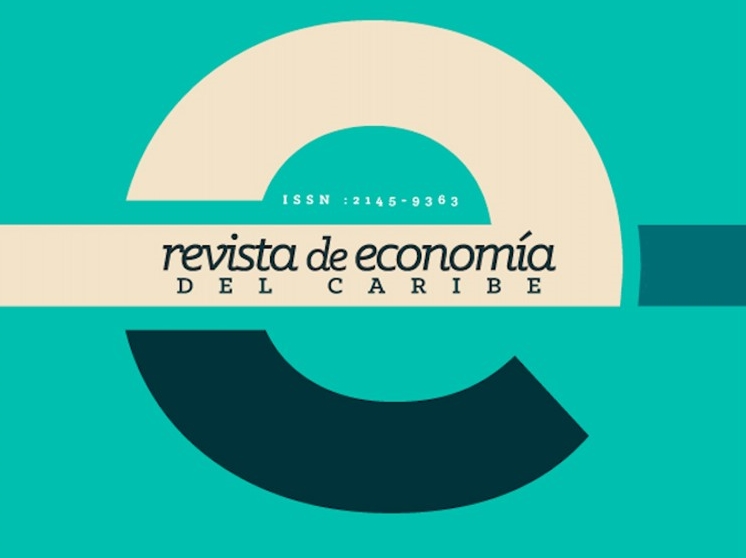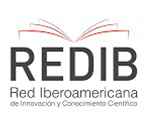Public investment in education and its effect on human development in Ecuador.
Keywords:
educational public investment, human development, human capital, time seriesAbstract
La inversión pública en educación y su impacto en el desarrollo humano en Ecuador durante el periodo 2000-2022 constituye un factor determinante para el progreso socioeconómico del país. La literatura académica destaca la relación entre la inversión educativa y el desarrollo social en América Latina. Se aplicó una metodología cuantitativa basada en series de tiempo y un modelo de regresión lineal múltiple utilizando datos de fuentes oficiales. Los resultados muestran una asociación positiva significativa entre el aumento del gasto educativo y la mejora en indicadores como las tasas de escolarización y la reducción de las brechas socioeconómicas. Se concluye que la implementación de estrategias de educación integral es fundamental para potenciar el desarrollo humano en Ecuador.
References
Alarcón Osuna, M. A. (2016). Human capital formation and foreign direct investment: Is it a
nonlinear relationship? Acta Universitaria, 26(4), 66–78.
https://doi.org/10.15174/au.2016.1032
Arias, E., Giambruno, C., Morduchowicz, A., & Pineda, B. (2024). The state of education in
Latin America and the Caribbean 2023. Inter-American Development Bank.
https://publications.iadb.org/publications/english/document/The-state-of-education-in
Latin-America-and-the-Caribbean-2024.pdf
Audrey, A. (2020). Global education monitoring report 2020: Inclusion and education: All
means all. UNESCO. https://doi.org/10.54676/JJNK6989
Banco Mundial. (2023). Una nueva era de justicia social (Vol. 1).
https://documents1.worldbank.org/curated/en/099405110112326811/pdf/SECBOS198ad
a01b00b143eb19e841dfefb5df959e.pdf
Barro, R., & Lee, J. (2013). A new data set of educational attainment in the world, 1950–2010.
Journal of Development Economics, 104, 184–198.
https://doi.org/10.1016/j.jdeveco.2012.10.001
Beker, V. A. (2019). Retenciones con tipo de cambio flexible. Estudios Económicos, 36(73),
–197. https://doi.org/10.52292/j.estudecon.2019.1871
Carhuapoma-Yance, M., Apolaya-Segura, M., Valladares-Garrido, M. J., Failoc-Rojas, V. E., &
Díaz-Vélez, C. (2021). Índice desarrollo humano y la tasa de letalidad por COVID-19:
Estudio ecológico en América. Revista del Cuerpo Médico Hospital Nacional Almanzor
Aguinaga Asenjo, 14(3), 362–366. https://doi.org/10.35434/rcmhnaaa.2021.143.1258
Castellanos, A. (2022). Variaciones en la inversión educativa y su impacto en los índices de
desarrollo humano. Dialnet. https://dialnet.unirioja.es/servlet/articulo?codigo=8693491
(Agregar URL completa si está disponible)
Cedeño-Aguayo, J. M., Zambrano-Alcívar, R. A., & Ávila-Carvajal, R. A. (2021). Educación
parvularia en Ecuador y su aporte a la educación inicial. Dominio de las Ciencias, 7(1),
–196. https://doi.org/10.23857/dc.v7i1.1698
Cisnero, C., Jiménez, R., & Andrade, D. (2023). El impacto de las nuevas tecnologías y la
inteligencia artificial en el empleo del sector jurídico. Universidad y Sociedad.
https://rus.ucf.edu.cu/index.php/rus/article/view/3847
Correa-Quezada, R., Esparza, K., & Campoverde, K. (2023). Índice de desarrollo de las
regiones de Ecuador. Revista Economía y Política, 18–30.
https://doi.org/10.25097/rep.n37.2023.02
Cotler, P., & Carrillo, R. (2020). La desigualdad y el disímil impacto de la política monetaria.
Revista Mexicana de Economía y Finanzas, 16(2), 1–19.
https://doi.org/10.21919/remef.v16i2.580
Creswell, J. W. (2013). Investigación cualitativa y diseño de investigación: Elección entre cinco
enfoques (3.a ed.). https://academia.utp.edu.co/seminario-investigacion
II/files/2017/08/INVESTIGACION-CUALITATIVACreswell.pdf
De Bracamonte Morales, P. J., Esquerre Ávila, G. A., Chang Pardo, C. A., Guarniz Benites, O.
C., & Luis Grados, C. A. (2023). Salud, educación y economía de la ciudadanía:
Interrogantes sobre la inversión pública per cápita y su impacto en el índice de
desarrollo humano. Religación Press. https://doi.org/10.46652/ReligacionPress.59
Espíritu Olmos, R., González Sánchez, R. F., & Alcaraz Vera, E. (2014). Desarrollo de
competencias emprendedoras: Un análisis explicativo con estudiantes universitarios.
Cuadernos de Estudios Empresariales, 22, 29–53.
https://doi.org/10.5209/rev_cese.2012.v22.44644
Fields, G. S. (2011). Working hard, working poor: A global view. Oxford University Press.
https://doi.org/10.1093/acprof:oso/9780199794645.001.0001
García, M., & Ramírez, T. (2024). Aligning educational investment with labor market demands
in Ecuador. Latin American Economic Review. (Falta DOI o URL)
Gómez, I., & Escobar, F. (2021). Educación virtual en tiempos de pandemia: Incremento de la
desigualdad social en el Perú. Chakiñan, Revista de Ciencias Sociales y Humanidades,
, 152–165. https://doi.org/10.37135/chk.002.15.10
Gujarati, D. N., & Porter, D. C. (2010). Econometría (5.a ed.).
https://files.uagrm.edu.bo/entidad/161/file/indexed/Ecomod/An%C3%A1lisis%20econo
m%C3%A9trico%20con%20Eviews%209/Econometria-Damodar-N-Gujarati
ta%20Ed.pdf
Hanushek, E. A., & Woessmann, L. (2010). The cost of low educational achievement in the
European Union. Analytical Report No. 7. http://www.education
economics.org/dms/EENEE/Analytical_Reports/EENEE_AR7.pdf
Helliwell, J., Layard, R., & Sachs, J. (2019). World Happiness Report 2019. Sustainable
Development Solutions Network. https://worldhappiness.report/ed/2019/
Isaías Francisco, D. P., Seguín Lucio Alfredo, B., & García Henry, C. G. H. (2021). El
aprendizaje colaborativo como estrategia didáctica en América Latina.
TecnoHumanismo, 1(8), 31–52. https://doi.org/10.53673/th.v1i8.41
Joaqui-Barandica, O., & Orozco-Cerón, Ó. W. (2023). Nonlinear predictive relationship
between GDP per capita and mortality rate: UK case study. Desarrollo y Sociedad, 93,
–206. https://doi.org/10.13043/DYS.93.5
Lauren, S. (2022). ¿Qué es la investigación descriptiva y cómo se utiliza? ATLAS.ti.
https://atlasti.com/es/research-hub/investigacion-descriptiva
Leão, P., Gama, M. A. B., & Fleury, M. T. L. (2023). Developing dynamic capability in social
strategies. Revista de Administração de Empresas, 63(5). https://doi.org/10.1590/s0034
Leite, D. W., & Cardoso, L. C. B. (2022). Human capital and technology in the growth of
economic structure. Investigación Económica, 82(323), 27–52.
https://doi.org/10.22201/fe.01851667p.2023.323.82953
Lindert, K., Skoufias, E., & Shapiro, J. (2010). Redistributing income to the poor and the rich:
Public transfers in Latin America and the Caribbean. World Bank Policy Research.
https://documents1.worldbank.org/curated/en/413331468300691124/pdf/369661Redistri
buting0income0SP00605.pdf
López, F., & Lustig, N. (2010). Declining inequality in Latin America: A decade of progress?
Brookings Institution Press.
López-Fernández, V., Llamas-Salguero, F., Sospedra-Baeza, M. J., & Martínez-Álvarez, I.
(2022). Relación entre creatividad y rendimiento académico en España y Colombia.
Revista Colombiana de Educación, 39(86), 31–52. https://doi.org/10.17227/rce.num86
Lucero, M. (2020). Rendimiento de la educación en Ecuador. Estudios de la Gestión. Revista
Internacional de Administración, 6(6), 37–90.
https://doi.org/10.32719/25506641.2019.6.2
Mankiw, N. G., Romer, D., & Weil, D. N. (1992). A contribution to the empirics of economic
growth. Quarterly Journal of Economics, 107(2), 407–437.
https://eml.berkeley.edu/~dromer/papers/MRW_QJE1992.pdf
Maqueira Caraballo, G. de la C., Martínez, R. I., Velasteguí, E., & Guerra Iglesias, S. (2023).
La educación inclusiva: desafíos y oportunidades para las instituciones escolares.
Journal of Science and Research, 8, 210–226. https://doi.org/10.5281/zenodo.8212998
Marca, J. (2021). El tipo de cambio y su influencia en las exportaciones definitivas del Perú
–2019. Proceso de Gestión de Compras de la Empresa Cencosud S.A. Metro, 1, 67.
http://hdl.handle.net/20.500.12969/1750
Merino-Rosero, M. L., & Sabando-Murillo, G. A. (2024). Competitividad y desarrollo
sostenible: Un estudio de datos de panel para América Latina. KAIRÓS, Revista de
Ciencias Económicas, Jurídicas y Administrativas, 7(12), 24–43.
https://doi.org/10.37135/kai.03.12.02
Monjarás, A., Bazán, A., Pacheco, Z., Rivera, J., Zamarripa, J., & Cuevas, C. (2019). Diseños
de investigación. Educación y Salud, 8(15). https://doi.org/10.29057/icsa.v8i15.4908
Moreno, R., Piñeros, M., & Hernández, G. (2005). Atlas de mortalidad por cáncer en
Colombia. Instituto Nacional de Cancerología. https://www.ins.gov.co/TyS/programas
de
calidad/Documentos%20Programa%20EEDDCARIO/ATLAS_de_Mortalidad_por_canc
er_en_Colombia.pdf
Favila Tello, D. A., & Navarro Chávez, D. (2017). Desigualdad educativa y su relación con la
distribución del ingreso en los estados mexicanos. CPU-e, Revista de Investigación
Educativa, 24, 75–98. https://doi.org/10.25009/cpue.v0i24.2404
Nussbaum, M. (2020). Creating capabilities: The human development approach. Harvard
University Press. https://hdl.handle.net/11362/7603
Ocampo, H. (2006). Incidencia de la educación en la desigualdad del ingreso laboral: El caso
ecuatoriano durante el periodo 1990–2003. http://hdl.handle.net/10469/245
Pinela-Cruz, C. N., Pacheco-Castro, L. R., & Soledispa-Cañarte, B. J. (2021). Clases sociales,
pobreza y desigualdad en la sociedad ecuatoriana post-COVID-19. Revista Arbitrada
Interdisciplinaria Koinonía, 6(3), 1116–1129.
https://dialnet.unirioja.es/descarga/articulo/7926962.pdf
Programa de las Naciones Unidas para el Desarrollo (PNUD). (2022). Informe sobre desarrollo
humano 2021/2022. https://www.undp.org/sites/g/files/zskgke326/files/2022
/Datos%20relevantes_0.pdf
Poy, S., Robles, R., Ledda, V., & Salvia, A. (2022). Aumento de la desigualdad del ingreso
antes y después de la crisis del COVID-19 en Argentina. Problemas del Desarrollo.
Revista Latinoamericana de Economía, 54(212), 3–26.
https://doi.org/10.22201/iiec.20078951e.2023.212.69919
Pritchett, L. (1996). Where has all the education gone? The World Bank Economic Review,
(3), 367–391.
https://documents.worldbank.org/curated/pt/859821468180273788/pdf/773740JRN0200
l0the0Education0Gone.pdf
Rajkumar, A., & Swaroop, V. (2008). Public spending and outcomes: Does governance matter?
Journal of Development Economics, 86(1), 96–111.
https://doi.org/10.1016/j.jdeveco.2007.08.003
Ramírez Álvarez, J. F., & Díaz Sánchez, J. P. (2018). Fuentes de la desigualdad económica en
Ecuador. Revista Economía y Política, 13(25), 9–28.
https://doi.org/10.25097/rep.n25.2017.01
Ribadeneira, M. (2021). El Protocolo de Nagoya sobre acceso a los recursos genéticos y la
participación justa y equitativa en los beneficios que se deriven de su utilización:
especial referencia a su implementación en España. Revista Electrónica de Estudios
Internacionales, 11(42). https://doi.org/10.17103/reei.42.04
Robeyns, I. (2022). The capability approach: A theoretical framework for understanding human
development in the digital age. Journal of Human Development and Capabilities, 6(1).
https://biblioteca.hegoa.ehu.eus/downloads/15356/%2Fsystem%2Fpdf%2F830%2FThe_
Capability_Approach._A_Theoretical_Survey.pdf
Rodríguez Miranda, A., Vial Cossani, C., & Parrao, A. A. (2021). Composite and
multidimensional index of regional development: A proposal for Latin America. Revista
Iberoamericana de Estudios Municipales, 1–34. https://doi.org/10.32457/riem.v23i1.580
Romero A., I. S. (2014). La distribución del ingreso y las teorías macroeconómicas del
crecimiento. Negotium, 10, 56–78. https://www.redalyc.org/pdf/782/78232555005.pdf
Sánchez-Vélez, V., Arteaga-Pita, I., & Gómez-García, S. (2020). Análisis sobre seguridad
ciudadana y desarrollo local en Ecuador. Polo del Conocimiento, 5(12), 759–773.
https://dialnet.unirioja.es/descarga/articulo/8042571.pdf
Sarrate, M. L., García, J. L., & Pérez, G. (2013). Impacto de la educación en el emprendimiento.
Pedagogía Social. Revista Interuniversitaria, 22, 75–89. https://doi.org/10.7179/PSRI
Sen, A. (1999). Development as freedom (ilustrada). Oxford University Press.
https://books.google.com.ec/books?id=NQs75PEa618C
Sen, A. (2023). On the foundations of welfare economics: Utility, capability, and practical
reason. En Ethics, rationality, and economic behaviour (pp. 50–65). Oxford University
Press. https://doi.org/10.1093/oso/9780198289814.003.0005
Sierra, P., & Jesús, A. de. (2015). Uso de variables de actividad económica en la estimación del
PIB per cápita microterritorial. Cuadernos de Economía, 34(65), 349–376.
https://doi.org/10.15446/cuad.econ.v34n65.45936
Suárez, E. (2019). Índice de desarrollo humano: una mirada desde Ecuador. Revista PUCE.
https://doi.org/10.26807/revpuce.v0i108.214
Suárez, T. (2023). Disparidades regionales en infraestructura educativa y calidad de enseñanza
en Ecuador. Evaluación Educativa. http://www.doi.org/10.55867/libroqual23.01
Sumba, R. Y., Saltos, G. R., Rodríguez, C. A., & Tumbaco, Z. L. (2020). El desempleo en el
Ecuador: causas y consecuencias [Unemployment in Ecuador: causes and
consequences]. Polo del Conocimiento, 5(10), 774–797.
https://doi.org/10.23857/pc.v5i10.1851
Tejedo-Romero, F., Tejada Ponce, Á., Ramírez Corcoles, Y., & Pérez, M. (2023). Board
leadership structure and human capital disclosure: Role of independent directors.
European Research on Management and Business Economics, 29(3).
https://doi.org/10.1016/J.IEDEEN.2023.100224
Valencia Núñez, E. R., Valle Álvarez, A. T., Cruz Lascano, M. E., & Haro Sarango, A. F.
(2022). Evaluación de la sostenibilidad financiera en el Crédito de Desarrollo Humano
Asociativo en la provincia de Tungurahua, Ecuador. Lecturas de Economía, 97, 325
https://doi.org/10.17533/udea.le.n97a346723
Villarruel-Meythaler, R. E., Echeverría-Villafuerte, D. H., Bedoya-Ramos, M. A., & Moreta
Saraguro, E. S. (2020). Crecimiento económico, concentración del ingreso y reducción
de la pobreza: Evidencia en Ecuador de la hipótesis de Bourguignon. Killkana Social,
Published
Issue
Section
License
I, ____________________________________________, author of the work and/ or article, adult, residing in the city of _________________, bearing the Identity Card/Passport n.° ______________________, issued in _______________________, in command of his/her/their physical and mental faculties, party hereinafter referred to as AUTHOR, signs the following authorization so the reproduction, publication, communication and distribution of the work can be done, under the following terms:
1. That, regardless of existing legal regulations due to the relationship of the parties to this contract, and any other existing legal presumption, the parties agree that the AUTHOR authorizes the Universidad del Norte, with the purpose of reproduce, publish, communicate and distribute the material called in the Revista de Economía del Caribe.
2. That such authorization apply to the copyright of the work, by any means, known or to be known, the public communication of the work, and the distribution of the work, directly or by third parties, purely educational purposes.
3. The AUTHOR undertakes to inform and declare the existence of this authorization and to preserve the right of the journal Revista de Economía del Caribe to the first publication of the work.
4. The AUTHOR states that the article is original and his/her/their exclusive creation, there being no impediment of any kind for the authorization he/she/they is/are giving, responding thereto by any action: claim, plagiarism or any other type of complaint that might arise about.
5. That such authorization is granted for free.
6. The moral rights of the author on the article correspond exclusively to the AUTHOR, in virtue of which, the Universidad del Norte agrees to expressly and rigorously recognize and respect them.





























